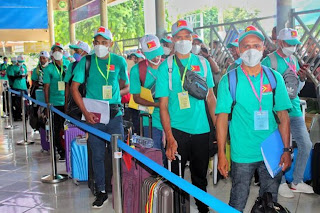Sending Timorese youth overseas: Finding employment or achieving development objectives?

Historically, sending young Timorese overseas is not new for Timor Leste and the Timorese people. Even some of our founding fathers and the current leaders of this nation went overseas for study or for work during Portuguese and Indonesian times, traveling to Portugal, Mozambique, Indonesia, and Australia. This continues even until today. Since our independence in 2002 many Timorese have travelled overseas, some for studies under development partner and government scholarships, and some for work, posts in embassies and consuls in countries throughout the world. Many thousands have accessed Portuguese passports, to find shelter and employment in the United Kingdom and other European countries. Timorese moving to and working in another country is not a new thing. Source: Timor News, (6/12/2021) This short article aims to explore an important question: does Timorese youth going overseas simply achieve a short-term goal of finding, jobs or does it also help Timor Leste to



